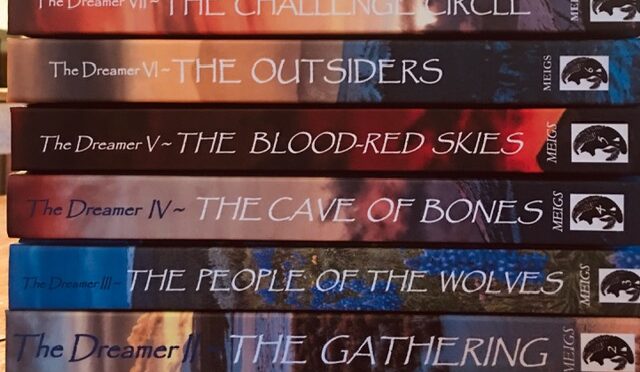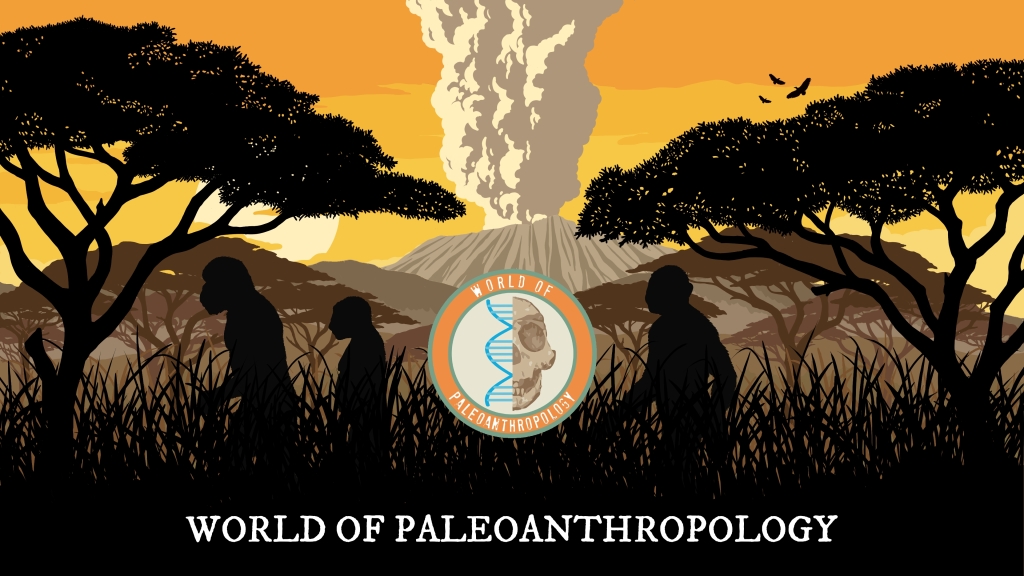
Seth Chagi, the Founder and Project Director of World of Paleoanthropology, recently interviewed me for an episode of The Story of Us! podcast. Seth and I first “met” several years ago when I was deep in the process of writing my Dreamer Books: An Ice Age Saga series. At that time, I was doing extensive research for my books. Reliable, up-to-date paleoanthropological information can be hard to come by, but World of Paleoanthropology is a fantastic resource. It taps directly into the work of leading scientists in the field, sharing the latest discoveries and their accompanying hypothesis. This information was invaluable to me, so I reached out to thank Seth for his work and let him know how helpful the site had been.
What started as a thank-you note turned into a years-long correspondence. Eventually, I offered to help with some of the website tasks, and later, I was invited to contribute articles. It’s all voluntary, but I like to think that my efforts are a small way of showing my gratitude.
Fast forward to last week, when Seth and I finally spoke face-to-face via Zoom for the podcast. It was an honor to talk about my books, though in hindsight, I realize I may have skimmed over certain topics or could have explained them better. To address this, I’ll be writing a few blog posts to expand on some of the subjects we touched on. I’ll start by sharing how I gained insight into the various animals that appear in the Dreamer Books series.
To begin, I will touch on how I gained insight into the various animals that appear in the Dreamer Books.
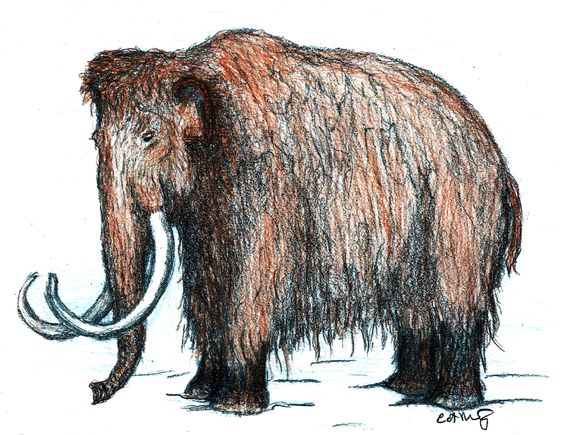 Woolly mammoths are a topic of fascination for me because I have loved pachyderms from the time I actually met an elephant. This gentle giant was a beautiful creature with lovely brown eyes and long eyelashes. I longed to pet him as though he were an enormous dog, but I felt that would be rather too forward on my part —after all— he didn’t know me. How would I feel if some stranger came up to me and behaved in such a way? I could, however, offer him a handful of elephant kibble (which was made available to visitors to feed the elephants) so I held out the nuggets, hoping I could interest him in a snack. He did indeed perk up at the sight of the proffered treats. I expected that the elephant would use his trunk like a hand and that he might daintily grasp the yummy bits, and then place them in his mouth. What he did was step toward me, open his mouth and he took my entire forearm into his mouth —up to my elbow— and sort of sucked the kibble off the palm of my hand. He was so placid and docile that it wasn’t at all alarming, but I do recall being quite surprised. This was in the back of my mind as I read-up on elephants and woolly mammoths. What I learned only added to my admiration and affection for these magnificent beasts.
Woolly mammoths are a topic of fascination for me because I have loved pachyderms from the time I actually met an elephant. This gentle giant was a beautiful creature with lovely brown eyes and long eyelashes. I longed to pet him as though he were an enormous dog, but I felt that would be rather too forward on my part —after all— he didn’t know me. How would I feel if some stranger came up to me and behaved in such a way? I could, however, offer him a handful of elephant kibble (which was made available to visitors to feed the elephants) so I held out the nuggets, hoping I could interest him in a snack. He did indeed perk up at the sight of the proffered treats. I expected that the elephant would use his trunk like a hand and that he might daintily grasp the yummy bits, and then place them in his mouth. What he did was step toward me, open his mouth and he took my entire forearm into his mouth —up to my elbow— and sort of sucked the kibble off the palm of my hand. He was so placid and docile that it wasn’t at all alarming, but I do recall being quite surprised. This was in the back of my mind as I read-up on elephants and woolly mammoths. What I learned only added to my admiration and affection for these magnificent beasts.
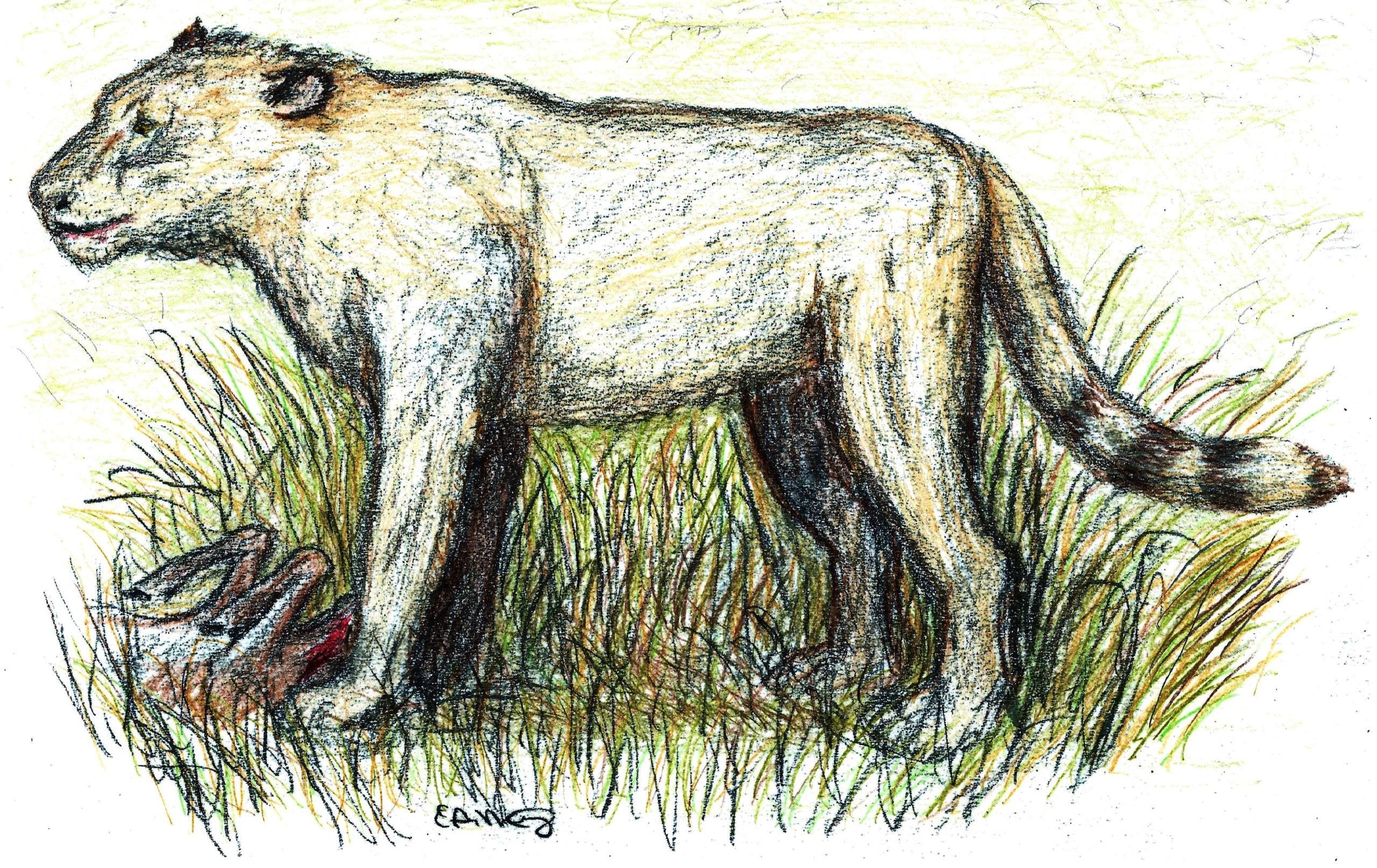
Cave lions are another well known animal from the last Ice Age. I had a little experience with wild cats (bobcats) and tame big cats (tigers and lions), but I wanted to know more about the felines that populated the last Ice Age. As with the mammoths, I did research to expand upon my limited knowledge (which is detailed below).
As part of being a resident employee at a state park where bobcats were numerous, I saw them almost every day —sometimes several times a day. I used to hike the trails at sunup with my Bernese Mountain Dog, Sam, and we often ran into these long-legged and graceful cats. Mostly (and disappointingly), they promptly ran away from us. But occasionally, they would simply look at us and amble off, allowing me a moment to admire their sleek speckled forms. One day as Sam and I walked along, a half-grown bobcat ran diagonally across the trail in front of us. A little further on, the bobcat repeated the action. And again, and again, and again —each time, Sam became more excited. Whatever this game was, he seemed to want to be part of it! Had this been a mature female bobcat, I might have thought she was trying to lead us away from her kittens, but this was just a youngster acting like a housecat with a 3 A.M. case of the zoomies. I lost count of how many times the bobcat ran in front of us, but I found it intriguing that it chose to interact with us in this way.
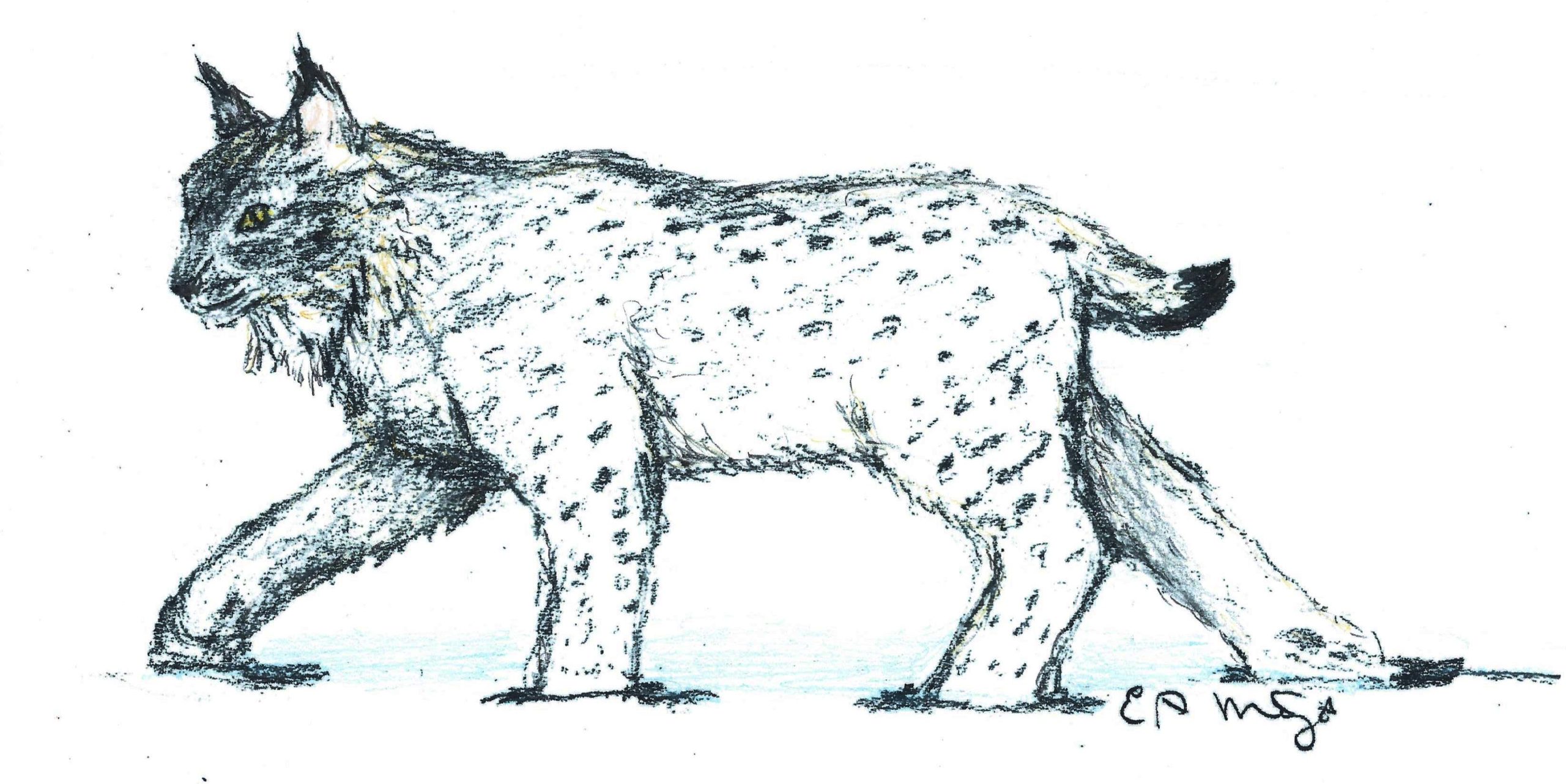 Years prior, a friend who worked at a facility that housed an assortment of tame wild animals occasionally invited me to come on a private tour. The tigers were impressive and unexpectedly, quite amiable. It was amazing to see them up-close and marvel at how huge they were. They loved to play a version of hide and seek with their human keepers, bounding with heavy footfalls all around the buildings within their enclosure, while making what I was told were “happy tiger sounds”, including snorts (almost like a horse would make) and little moans. This was enthralling to witness. Less enthralling, was an introduction to a lioness. I didn’t go into any of the enclosures, but my friend did and while visiting the lioness she chomped-down on his hand and wouldn’t let go. He stayed calm, but it took sometime to free his hand from her maw. He finally escaped the enclosure, his hand bleeding from several deep puncture wounds. He said she had never done that before. Actually, he was lucky; she could have easily done far worse had she been so inclined, but evidently she just had a hankering to gnaw on him for a bit. That was the end of my tour that day. (My friend was fine after his hand was treated and bandaged.)
Years prior, a friend who worked at a facility that housed an assortment of tame wild animals occasionally invited me to come on a private tour. The tigers were impressive and unexpectedly, quite amiable. It was amazing to see them up-close and marvel at how huge they were. They loved to play a version of hide and seek with their human keepers, bounding with heavy footfalls all around the buildings within their enclosure, while making what I was told were “happy tiger sounds”, including snorts (almost like a horse would make) and little moans. This was enthralling to witness. Less enthralling, was an introduction to a lioness. I didn’t go into any of the enclosures, but my friend did and while visiting the lioness she chomped-down on his hand and wouldn’t let go. He stayed calm, but it took sometime to free his hand from her maw. He finally escaped the enclosure, his hand bleeding from several deep puncture wounds. He said she had never done that before. Actually, he was lucky; she could have easily done far worse had she been so inclined, but evidently she just had a hankering to gnaw on him for a bit. That was the end of my tour that day. (My friend was fine after his hand was treated and bandaged.)
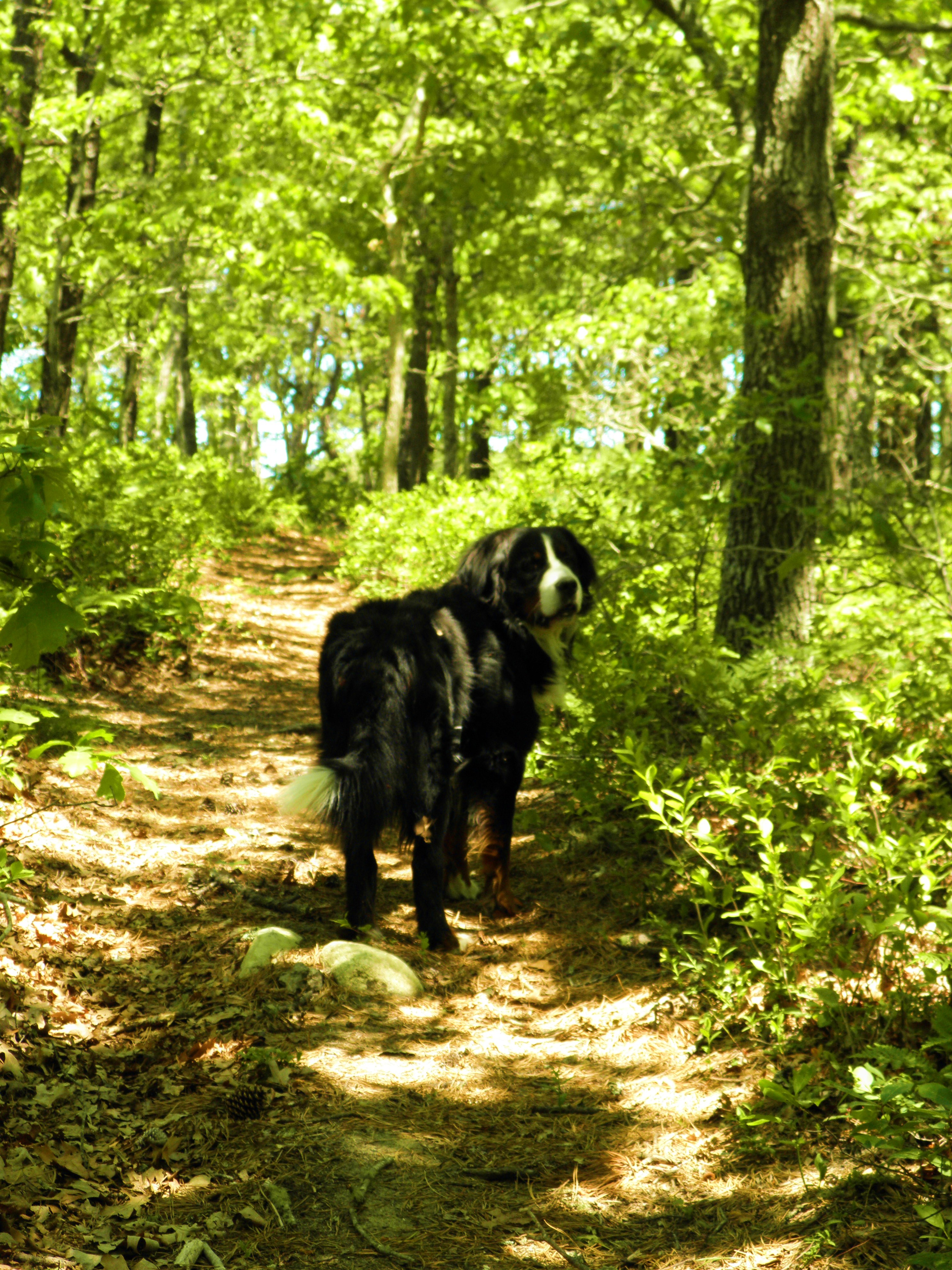
Photo by E. A. Meigs
I also write about boars. I have not had contact with the kind of Eurasian wild boars that appear in my books, but I have seen plenty of what we in North America call wild hogs. Most of those times, I was fortunate to have the protection of being in a vehicle, but one early morning my dog Sam and I were walking the trails when I saw a black furry animal’s hind-end sticking out of the brush up ahead. I usually made a point to keep up a constant chatter to Sam as we walked, hoping that my voice and the sounds of our footsteps and his clinking dog tags would give most animals a chance to hear our approach and thus leave the vicinity. But this one had not yet sensed our presence. I said to Sam, “Well, that’s either a bear or a hog.” Hearing me, the beast backed out of the brush and picked up his head. It was then that I could see his ears and see that he was a hog. I hoped he would run away. He didn’t. Hogs can be kind of temperamental; you never know if they will just skedaddle or if they will charge. Their constantly honed tusks are formidable weapons and I had seen the damage they can do. I decided we should change direction immediately. No need to tempt Fate.
Deer are another animal I have frequently met. If I had a dog with me, the perpetually vigilant deer would bound away before I had time to do more than simply identify their species. Even when we awakened them from their peaceful slumbers at the crack of dawn, there was no early-morning grogginess and staggering upright; they came to their feet in an instant state of alertness. Once I watched as they ran toward the six foot fence that bordered the state park, which they leapt— hardly breaking their stride. I was impressed. I’d be hard-pressed to jump over anything upon awakening.
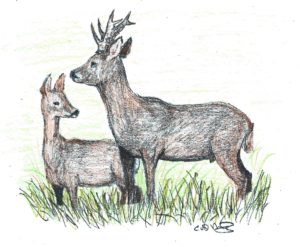
Other times, however, if I was alone the deer’s’ curious nature got the better of them and they would stare at me with fascination as though I was the most amazing thing they’d ever seen. And maybe I was! Especially during the time when I kept goats, I am sure I must have worn some of the goats’ aroma. That’s not a bad thing —they were does. While the bucks can be rather rank in season, the does just smelled of sweet hay. The deer must’ve wondered what in tarnation was this strange two-legged critter that looked completely alien but smelled oddly familiar. I would stand still and we would stare at one another until the deer finally tired of the staring match and began to saunter away, sometimes pausing to look over their shoulders at me as though they were still trying to figure out what they had seen.
Perhaps ironically, some of my favorite deer-related memories are from when I viewed them from a window, when the deer were unaware of my proximity and they were just going about their day. I’ve seen a herd going through the woods outside my house, walking in single-file. The herd was so large that it took maybe as long as five minutes to pass by. Also unforgettable, was the enormous buck I observed as it leisurely grazed in a thick fog. Another time, I saw a doe romping in a field of flowers. She was having a wonderful time, jumping and cavorting amongst the blossoms. I later took a photo of the meadow. (Below) I regretted not taking a photos while she was still there, but I was so spellbound by the sight I forgot to retrieve my camera.
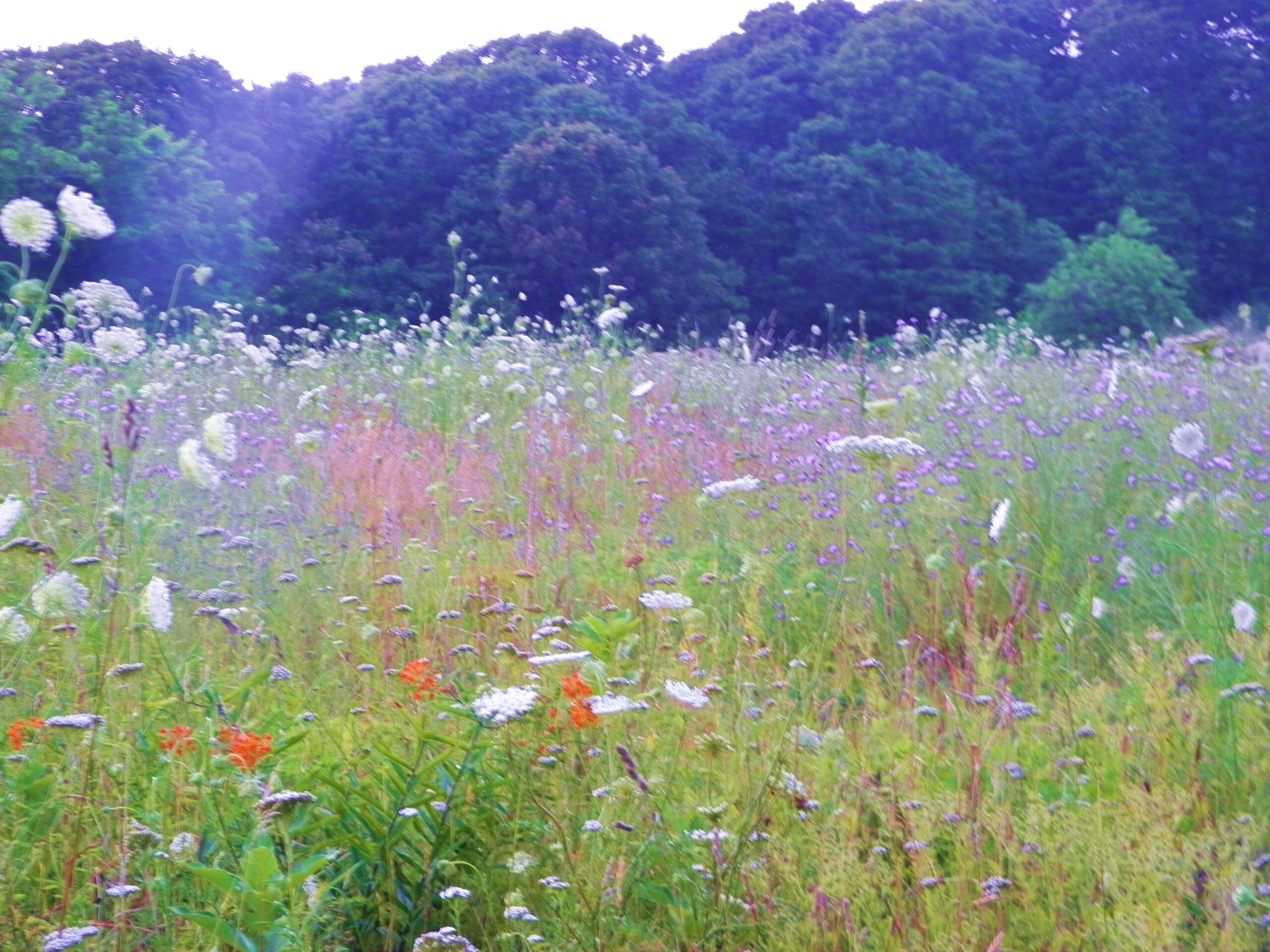
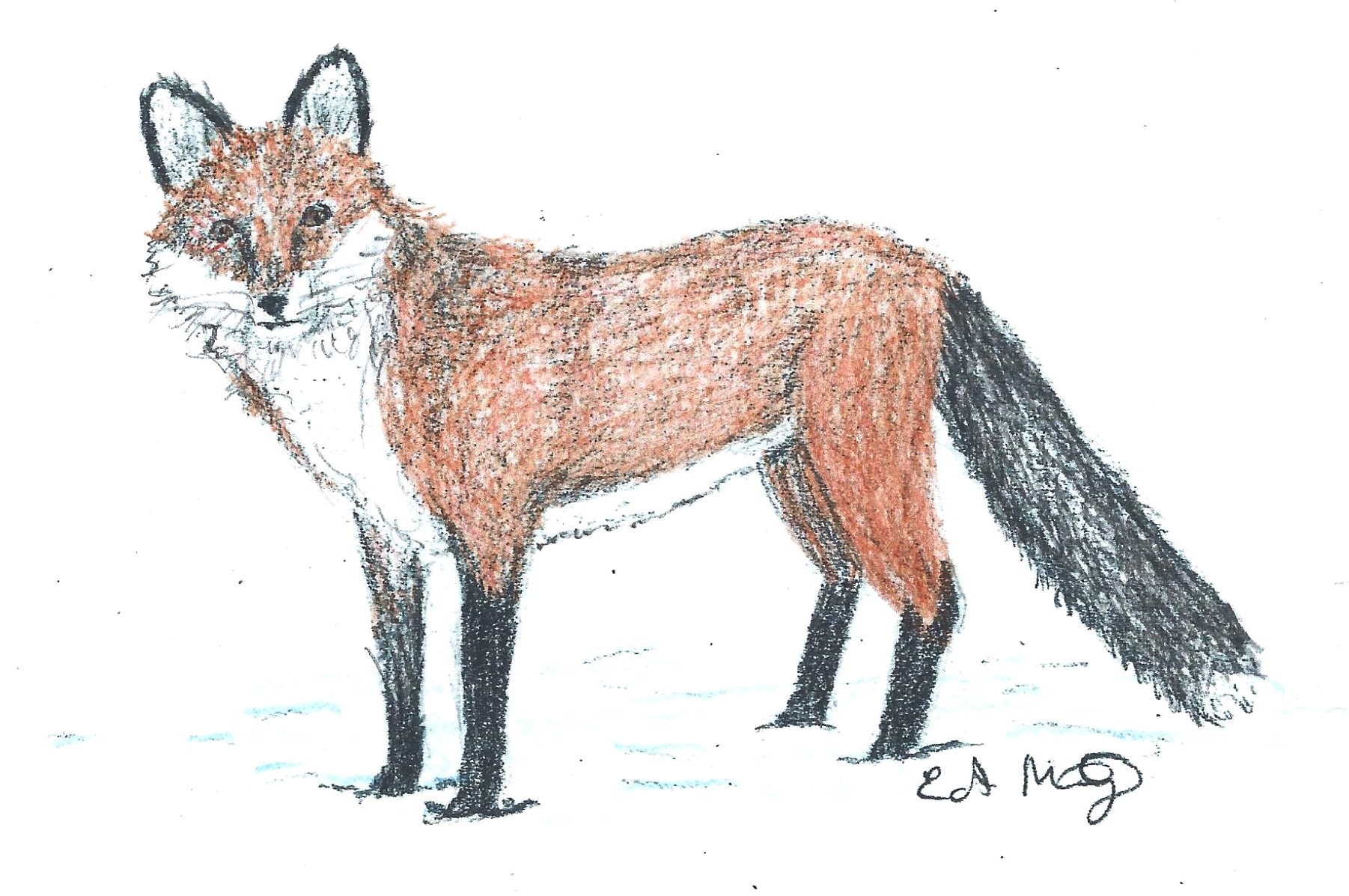 Lastly, I will talk about wolves and foxes. Foxes are fairly common animals and I always enjoy the sight of them. I live in a small town where foxes can be seen even downtown, sometimes cozily curled-up on the shops’ rooftops, indulging in an afternoon nap.
Lastly, I will talk about wolves and foxes. Foxes are fairly common animals and I always enjoy the sight of them. I live in a small town where foxes can be seen even downtown, sometimes cozily curled-up on the shops’ rooftops, indulging in an afternoon nap.
We don’t have actual wolves, but we have a lot of coy-wolves. These animals are a wolf/coyote hybrid, they are about halfway in size between the two species and share many of their traits. They are extremely adaptable and very successful in our area. Although primarily nocturnal, they are often seen during the day as well, even in well-populated neighborhoods. Their singing can be heard nightly and if they hear an emergency vehicle’s siren, they may accompany the blare with their own cries.
Sometimes Sam and I would meet up with a coywolf while on one of our treks. Sam was a friendly dog and anytime we crossed paths with another creature, he would pick up his head and wag his tail. But the coywolves did not care to make his acquaintance. Sam was a large dog —he wore a 32-inch collar around his massive neck— so I could appreciate their shyness. One coywolf was sleeping in tall grass by the side of the trail and we didn’t see each other until it suddenly poked its head up. Like the sleeping deer, the coywolf quickly roused himself and took off like a shot. Poor Sam. Another potential playmate gone.
 And that’s it for this entry. I hope you’ve enjoyed reading about some of my experiences with animals. I’ll be adding more blogs to go with the Story of Us! podcast.
And that’s it for this entry. I hope you’ve enjoyed reading about some of my experiences with animals. I’ll be adding more blogs to go with the Story of Us! podcast.
Be sure to check out World of Paleoanthropology for interviews, articles, book reviews, and much more! It is a veritable goldmine of paleoanthropological information!
To learn more about Dreamer Books: An Ice Age Saga check out these pages!

